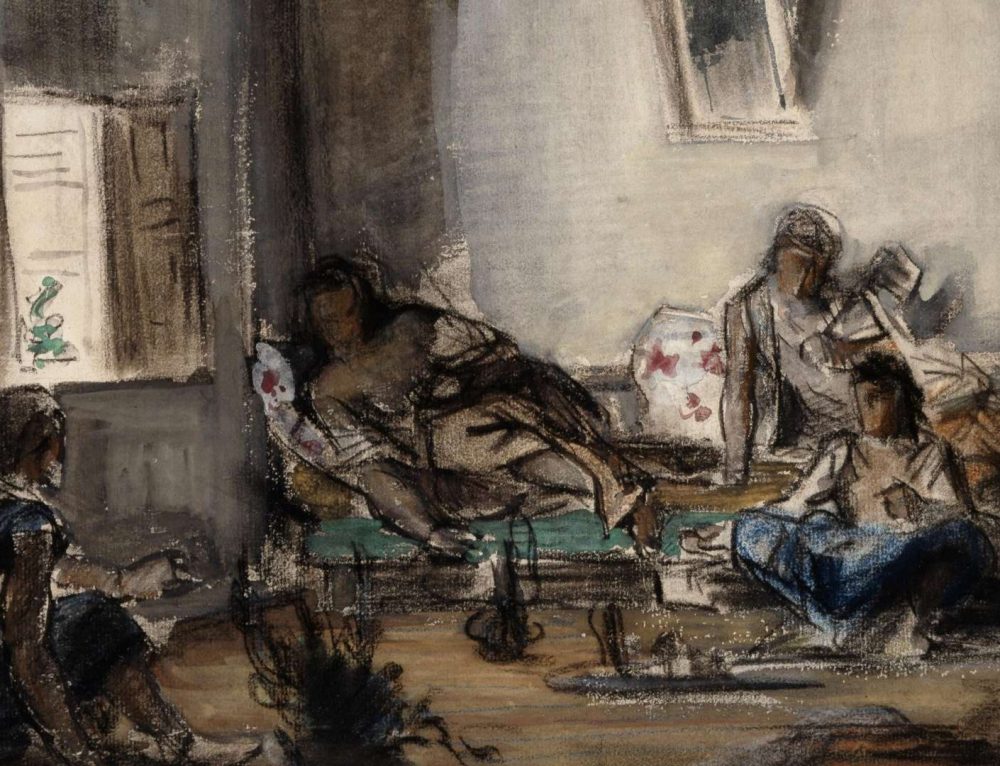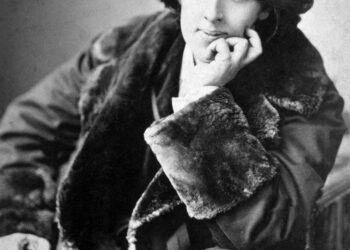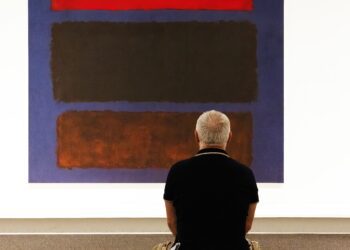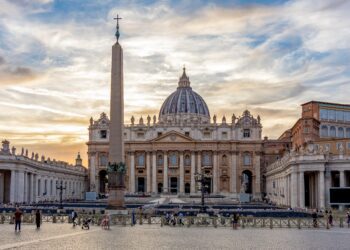Explore this exhibition of Orientalist art in one of the world’s leading museums without leaving the comfort of your home.
Like many students of the Middle East, I am still haunted by Edward Said 41 years after he wrote “Orientalism.” The seminal book argued that Western academics, writers, artists, and journalists had been agents of European soft power for over two centuries, constructing an image of the East that was exotic and therefore in need of taming. Orientalists’ art, literature, maps and artefacts reinforced the superior mindset of colonialists and whetted the appetite of Western governments to invade and possess Eastern nations, Said argued.
His ideas shook up coverage of the Middle East years before I began working as a journalist in the region, but I wrote racked with guilt. On one of my first assignments in Egypt, the British embassy in Cairo flew me with the then British prime minister, John Major, to visit the war cemeteries that Britain tends for soldiers killed fighting in the deserts of El Alamein during the second world war. It was a privilege rarely afforded to a young reporter and they expected a puff piece. I returned with a report about irate locals demanding Britain give up control of a site commemorating battles between two invading European armies on Egyptian soil. I titled it “Egypt for the Egyptians.”
Since the publication of “Orientalism” in 1978 many museums and art galleries have hidden away their collections of desert landscapes, desolate ancient ruins and other memorabilia from 19th century tours of the Orient. A new exhibition at the British Museum attempts to cast off the guilt and shame. Its neutral title—”Inspired by the East: how the Islamic world influenced Western art”— seems to strip art of political baggage. “We’re hoping to move beyond Said,” explains a curator. The exhibition hopes to highlight the quality of Orientalist art, presenting it as a more sincere—and surprising—cultural exchange.
The curators are right that Orientalism is more complex and blurred than Said believed. Western fascination with the East predates European colonization by many centuries. It thrived when Islam was a rising influence in the world and Muslim armies advanced to the gates of Vienna in the 16th and 17th centuries. In the 18th century, Handel and Mozart wrote operas about sultans as the Ottomans consolidated their hold on south-eastern Europe. And as the world shrank in the 19th century with the introduction of the train and the steam- boat, Eastern monarchs headed West as much as Western ones went East.
The Persian shah, Naser al-Din, spent 18 days in London in 1879—he spends much of his diary complaining how wet everything was. The trip was part of a European tour which also included stops in Moscow, Berlin, Vienna, Milan, Paris, and Liverpool. When the shah returned to his capital, Tehran, he adorned the recently built Sepahsalar mosque with the Christian accoutrement of a bell tower that still chimes on the hour. There was also the Ottoman Sultan, Abdel Hamid II, who instructed his court orchestra to play Verdi as he walked back up the hill to his palace from Friday prayers at his Istanbul mosque.
Yet Orientalist art cannot be divorced from the political backdrop in which it was produced. Most Orientalists survived by satisfying Europe’s market and catering to the colonial mindset. Some, like the French painter Claude Joseph Vernet (1714-89), worked on commission for European emperors, queens, and ambassadors. Others fed European fantasies with harem scenes from the East that, if they had been set in London or Paris, would have been thought pornographic.
Ignoring these details would be warping the past. Take Edouard Riou’s painting of the pomp and ceremony at the inauguration of the Suez Canal in 1869. The caption beneath the painting in the British Museum exhibition says that it shows how “developments in technology and travel during the 19th century increased awareness of, and interest in, the Middle East.” It makes no mention that Riou’s glorification of the event had been commissioned by Ferdinand de Lesseps, the French diplomat who developed the Suez Canal. Or that ceremonies like this beguiled Egypt’s rulers into financing a vast piece of infrastructure that benefited the West but bankrupted Egypt and led, 12 years later, to its conquest by Britain.
Absolving European Orientalists of guilt might require a little more effort and honesty, particularly from a museum that owes so many of its prized artefacts to the colonial project.
“A MEMLOOK BEY” (1863), BY JOHN FREDERICK LEWIS
As this painting’s title “A Memlook Bey” implies, this self-portrait oozes imperiousness and a sense of entitlement. Bey means lord and Mamluk refers to the slave class that ruled Egypt until the 19th century. The artist is painting himself, raising the question of who the artist is lording over. Ostensibly Lewis is haughtily turning his back on the Western viewer and striking out for the Orient. Lewis was the epitome of the mid-19th century British orientalist. He spent a decade living in a mansion in old Cairo, dressed in a red fez and a traditional Egyptian garment called a galabeya. The novelist William Makepeace Thackeray went to see Lewis in Cairo and remembers him riding a grey horse “with two servants besides him”. Lewis loved playing the sheikh in the Sinai desert. But he owed his keep to the Royal Academy and London’s art market. The garb can be seen as an imperious rebuke to the natives and an appropriation of their traditional attire.


“A PORTRAIT OF SULTAN BAYEZID I.” (C. 1580), BY SCHOOL OF VERONESE
The turban is Eastern. The heavy winter tunic looks Western. Together they represent the two halves of the new Ottoman Empire. For over 500 years until the Balkan wars of 1913, the Ottoman Empire was as much a European realm as an Eastern one. Sultan Bayezid’s mother was from the Balkans and gave him his blue eyes and pale complexion. He married a Serbian princess and called himself “Sultan-i-Rum”, Sultan of Rome. But something about this posthumous portrait of the sultan, who ruled the empire between 1389 and 1402, suggests his hold on power is off-balance. His posture—back heading one way, face the other—emphasizes his disorientation. The strain of deciding which way to turn shows on his furrow. So fixated was he by extending the Ottoman hold over the remnants of the Byzantine Empire that he laid siege to its prized capital, Constantinople, for eight years. But the siege left him exposed in the east and ended in failure. Advancing from the east, the Mongol conqueror, Tamerlane, defeated the sultan and held him captive until his death. His tragic predicament earned him a place in Western lore at a time when the Ottoman army horrified Europe with its power. This painting, produced in Italy 150 years after Bayezid’s death, prompts the question that bedevils European observers until today. Does Turkey, the modern successor of the Ottoman Empire, lean East or West?














